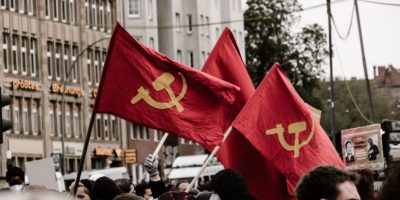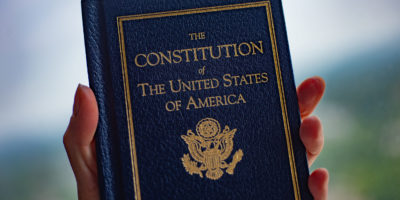By Lakshya Bharadwaj
As a country that is running a trade deficit, facing backbreaking inflation, battling an unprecedented economic crisis, and governed by a regime that lacks the faith of the people, Sri Lanka is witnessing a crucial time in its history.
The small and beautiful island of Sri Lanka is often eclipsed by discussions surrounding its richer, strategically more important, and dimensionally bigger northern neighbor, India. Recently, the island has been battling an unprecedented economic crisis of an alarming magnitude. While it is true that this crisis could have catapulted the island into international limelight, the current Russia-Ukraine hostilities have foreshadowed the plight of Sri Lankans facing relentless power cuts, fuel shortages, and endless hunger.
In this article, I attempt to succinctly break down the Sri Lankan Economic Crisis for western audiences that may need political and historical context to fully understand the gravity of what is transpiring on this small island.
Historical Background
Sri Lanka was a British colony that gained independence in 1948, albeit as a British Dominion, a status it was not able to shed until 1972, when it became a republic and changed its name from Ceylon to Sri Lanka. Despite electing the world’s first female Prime Minister, Sirimavo Bandaranaike, in 1960, Sri Lanka failed to expand its progressive politics to all realms of governance, disenfranchising the ethnic Tamil minority immediately after its independence in 1948.
Some 700,000 Tamils of Indian origin in Sri Lanka had been rendered stateless after the passing of a citizenship law in 1956 by the Ceylon Parliament. This was followed by mass “deportation” of Sri Lankan Tamils to India and ethnically harsh acts erasing the Tamil language and identity from other offices and governmental institutions.
The infamous, inhumane, and sanguineous Sri Lankan Civil War was a product of armed Tamil resistance that witnessed terrorist acts by LTTE, a separatist group, and the commission of war crimes by the Sri Lankan army. The war claimed about 100,000 lives and displaced close to a million. Anyway, in pursuit of unattainable historical thoroughness, I digress.
Current Politics and Crisis
Sri Lanka has been governed by the Rajapaksa brothers since 2019 in their current spell of governance. This temporal specification is relevant here since it is worth noting that Mahinda Rajapaksa, the current Prime Minister of Sri Lanka, served as the president of the country from 2005 to 2015, when he lost the presidency to Maithripala Sirisena, who was replaced in 2019 by Gotabaya Rajapaksa, Mahinda’s brother, as President. As glaringly nepotist as this development of events sounds, Sri Lankans had learned to live with their government until the current economic crisis.
Many experts attribute the immediate origins of the current economic crisis to the hit weathered by the tourism industry in the country, which has traditionally produced the third largest chunk of foreign exchange income by sector. Following an extremist attack during Easter in April 2019 which claimed about 270 lives, the country witnessed a sharp decline in tourist traffic, a chain of misfortunes worsened drastically by the COVID-19 pandemic, which devastated the economy, forcing it into a recession.
The crippling of the tourism industry was consequently followed by international credit rating agencies downgrading Sri Lanka’s ratings, making it impossible for the country to borrow money from international sources through bonds and other channels. This set into motion the steep downfall of Sri Lankan foreign reserves, which stands out as perhaps the sorest manifestation of the current crisis.
To understand how dwindling foreign reserves affect domestic economic conditions, and above all, the legitimacy of the current economic regime, one could regard the current discrepancy between the reserves and the debt obligations that Sri Lanka currently has. While the country has $2 billion in foreign reserves, it owes $7 billion this year, with $1 billion in bonds maturing in July. As the government inches closer toward a sovereign bond default, the prices of Sri Lankan sovereign bonds descend further, with the current risk premium associated with the bond being a whopping 28.36 percentage points.
Involvement of Foreign Actors
Chinese diplomacy traps and preying strategies have also added to the country’s woes. For the last two decades, Sri Lanka has received about $12 billion from China in infrastructure investments and been forced to give up as collateral to its ambitious creditor the strategic Hambantota port, which is intended by China as a major stop on the New Silk Road, officially known as the Belt and Road Initiative. Despite its stake in the country, China has refused Sri Lanka’s requests for credit to mitigate the ongoing crisis. On the other hand, India, a major regional rival of China, has forwarded $2.4 billion since January 2022 to its embattled southern neighbor.
Backlash and Protests
Sri Lanka Podujana Peramuna (SLPP), the party led by the Rajapaksa brothers, with Gotabaya Rajapaksa at the helm as the current president of the country, has lost over 40 Members of Parliament over this crisis. The entire cabinet has resigned except for the President and the Prime Minister, who are now relying on emergency powers to curb protests all over the country which are drawing Sri Lankans of all ages, classes, ethnicities, religions, and genders. The opposition leaders have demanded resignations from the Rajapaksa brothers as people stand in lines for hours for fuel, milk, and grains.
A major reason behind fuel shortages and the subsequent lack of basic items such as paper and milk is the inability of the country to import fuel, which it does not produce domestically. Not only does Sri Lanka lack the required foreign reserves, but the country has also devalued its currency in a bid to make its exports attractive and make a case before the IMF for a loan. After a 15 percent devaluation in the Sri Lankan Rupee, the state-run Ceylon Petroleum Corporation faces bankruptcy and owes US$3.3 billion to foreign entities.
Conclusion
As a country that is running a trade deficit, facing backbreaking inflation, battling an unprecedented economic crisis, and governed by a regime that lacks the faith of the people, Sri Lanka is witnessing a crucial time in its history. With 22 million people and no major resources or commodities featuring in its top exports, it is no wonder Sri Lankans are hungry, anxious, furious, and out on the streets marching toward Gotabaya’s home. That the primary export of the country is tea and the primary import refined petroleum indicates the gravity of this inflation-trade deficit-debt triangle.
The International Monetary Fund and India are two immediate actors who can help alleviate the pain of this economic crisis, but if the problem is truly as structural as the ongoing protests reveal, it is doubtful how much help loans will provide without proper domestic channels. Sri Lanka needs foreign reserves, fuel, oil, paper, and food, but above all, Sri Lanka needs a change to secure a future.
via Mises Institute











